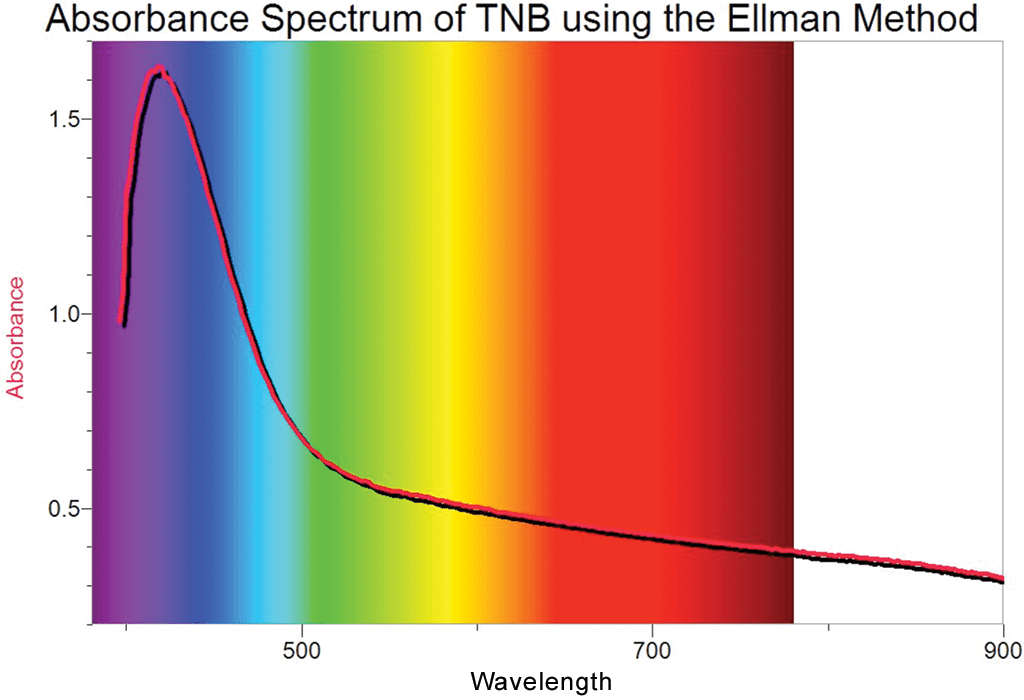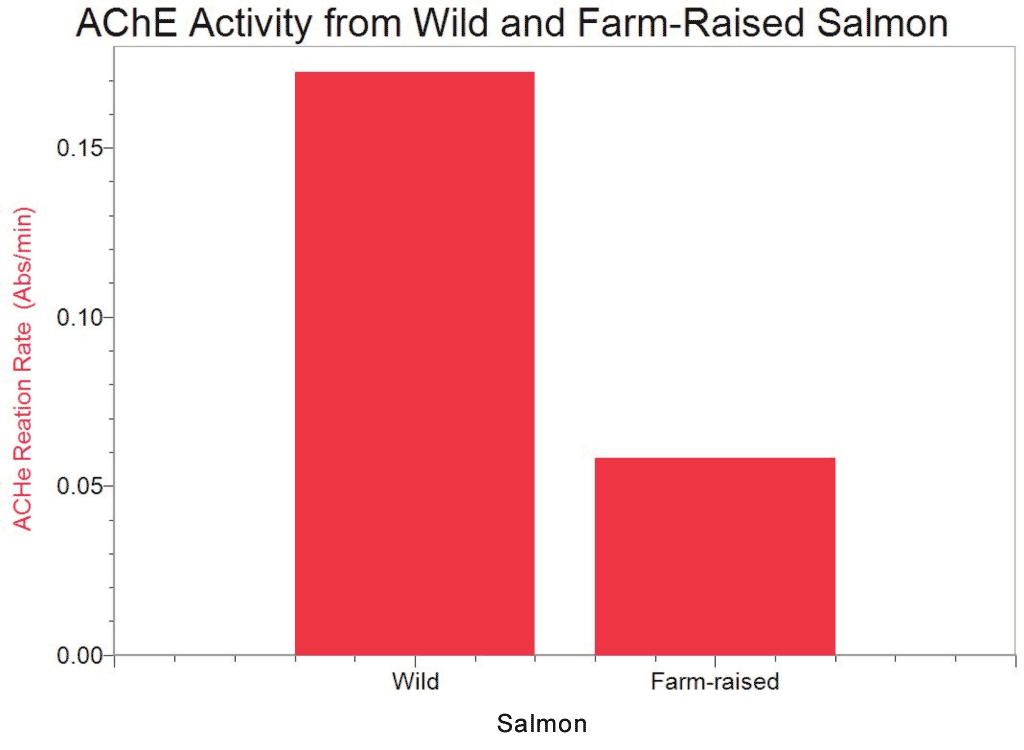Neurons communicate with each other and the rest of the body by releasing neurotransmitters. Neurotransmitters are small chemicals that bind to receptors on other neurons, cells, or tissues of the body. It is very difficult to study neurotransmitters directly. In many cases, the activity of an enzyme that produces or breaks down a neurotransmitter is studied instead.
I developed an advanced laboratory exercise on neurotransmitters using our SpectroVis Plus spectrometer. Vertebrate skeletal and cardiac muscles are controlled by neurons that release the neurotransmitter acetylcholine (ACh). These muscle cells contain an enzyme called acetylcholinesterase (AChE) that rapidly breaks down ACh into the compounds acetate and choline, terminating the action of the neurotransmitter.
A simple method for assaying the activity of AChE is the Ellman method. The compounds acetylthiocholine iodide (ACTHi) and dithiobisnitrobenzoate (DTNB) are added to a solution containing AChE. AChE breaks ACTHi down into acetate and thiocholine. Thiocholine then reacts with DTNB to form a compound called 5-thio-2-nitrobenzoate (TNB). As shown in the graph below, TNB is a yellow-colored compound with a peak absorbance at 412 nm. The rate that TNB is produced during the reaction is a function of AChE activity.

Acetylcholinesterase is an excellent enzyme for the college laboratory. AChE has been thoroughly researched and is medically important. The pharmacology of the enzyme is well known, and enough enzyme for an entire class period can be isolated from a single frozen chicken heart or a small piece of fish fillet. This enzyme also lends itself to guided-inquiry based exercises, many of which are listed in the teacher’s section of our latest edition of Advanced Biology with Vernier.
I was aware that the gene for acetylcholineserase can be regulated by the activity of a muscle. As a result, I decided to see if wild salmon fillets would contain more acetylcholinesterase activity than fillets from farm-raised salmon. Wild and farm-raised salmon fillets were obtained from the local grocery store. Tissue samples were prepared and tested using the Ellman method as described in Lab 16 in Advanced Biology with Vernier. The results are provided in this graph. You can see that wild salmon tissue breaks down acetylcholine almost five times faster than tissue from farmraised salmon.
If you want to repeat this experiment, or have questions about Lab 16 or any of our other Advanced Biology with Vernier exercises, contact me at jmelville@vernier.com.

